|
Willow wants a new website and I am going to design it alongside her. We haven't seen any sales from Etsy in years and it's time to move on. I don't know how long this process is going to take, or how the end product will look, but I want to share the experience. This blog is for my future self and for anyone interested. Below are questions we need answers to.
Blogs: Q: Do you want to do blogs? A: I love that I have a ton of DIY blogs, but I'm not certain about putting out regular new ones. Q: So you want to keep past blogs? But not have new ones? A: I'm kinda torn here, cuz I do enjoy helping others learn stuff. Q: What about one blog per month or something? You could also blog about what ever you want. It could be more like a work diary. What do you think about that? A: That's an idea. Yeah, I kinda like it. Products: Q: Do we have products you want to sell? A: I do have pre-made stuff which can go up for sale. Q: You're happy and proud of that pre-made stuff that we have had for years? A: You might be correct about some of the things I have made, maybe not up to snuff with my skill level now. So I'm sure we need to go through stuff before deciding if we want to list it. Q: Do you want new photos of those products? A: That's a good question and I'm not sure on that. I will probably need photos for some products. Cosplay: Q: Do you want to showcase your Cosplay? A: I love showcasing my Cosplay because of how awesome and impressive it is, but it's not where I want to focus drawing in clientele. Q: So you'd be happy to have Cosplay in an About Me section and some blogs? A: That's sounds good. Bark Gear: Q: Do you want to go back to BarkGear? A: I'm thinking about returning to Bark Gear for product marketing. Q: What do you mean by that? A: I like the focus on marketing a type of product. I think I could do well with dog stuff. I can already tell that the site is going to be a major overhaul just looking at the page titles alone.
With five of the pages heavily featuring cosplay, and one with cosplay in the title, it's clear as day that this site is desperate for a new look.
2 Comments
By Willow Enright Supplies:
Research Equals ObsessionIf you love cosplay you probably find yourself obsessing over the littlest costume piece of your favorite character’s wardrobe. Especially, when you plan on building complicated, barely documented recreations of something a costuming department made from scratch. The movie magic behind wardrobe can be frustrating, and usually, your only options are front angled photos, exhibits, and the actual TV show or movie. I like to use several reference photos, and sometimes I pause shows or movies on the character so that I can sketch design patterns. When making armor pieces I prefer to use a vegetable tanned leather, usually 7-12 oz depending on the armor and its use. For cosplay armor using a 5-9 oz veg tan is good. For Lexa’s bracers, I used an 8-9 oz section of veg tan leather that I got in trade from a friend who had wet formed them. She used some strapping which left some marking on the leather, so I had to sand and cut the pieces before they were the right size for the back section of Lexa’s bracers. The top flap and under flap were made with a 3-4 oz vegetable tanned leather since they would be overlapped and have velcro attached. I measured my forearms and cut the pieces according to my measurements, but I originally forgot to account for the thick under layers of my costume and had to add the under the flap to give a larger circumference. Needless to say, always wear as much of your costume as possible when measuring. Lexa the Vampire SlayerThe little spikes on the top section are made from twigs roughly the size of pencils in diameter so that they would fit into the pencil sharpener. I sharpened each end and then used the saw on a Gerber to cut them off. I repeated this process until the twig was too small and in the end, I had twenty little wooden spikes. I then used the 100 grit sandpaper to smooth the spikes, especially on the bottom where they would glue to the leather. I originally tried to use super glue on them. However, the leather pieces flex so much the wood spikes would pop off and I had to reglue them with Eco-weld leather cement. This gave them a bit more flexibility. Get Your Metal OnWhen it came time to paint the bracers, I didn’t use a primer since both materials are natural and raw. I used tape to mark off the sections that I wanted to leave raw for gluing later. Then laid the bracer pieces onto a piece of newspaper, shook my Forged Hammered pewter spray paint and then sprayed away. At first I tried to use one of the newer spray nozzle paints, however, it just dribbled all over my fingers leaving spots on my bracer pieces. So I returned that defective can and got an old school version with the little top that can be popped off and soaked if it gets clogged. I did a few layers of paint, waiting in between for the first coat to dry some. Leave overnight to dry. How to create your own Movie MagicIn order to get that "how the Hell does that even close," seamlessness look that Lexa sports in the T.V. Show, The 100, we had to use glue and hidden stitching. First, the spiked top flap was glued to the bottom bracer piece. I used Eco-weld leather cement, applied it to both sides of the leather, and waited for it to become tacky. I pressed the pieces together and clamped them for at least 10-15 minutes. If you don’t want clamp marks, be sure to use a piece of scrap leather between the clip and the project. Also, be sure to clean any overspill of the glue from combined edges or you will have a visible glue line. Sometimes when you are working on building something for the first time you make mistakes or underestimate the project. I completely forgot to take into account that I would be wearing a thick sweater or jacket sleeves underneath my bracers, so I had to add an additional leather flap for circumference. This allows me to wear the bracers much looser and accommodate the bulky sweater sleeves better. The additional leather sections were also spray painted to look the same as the previous sections. Hand Sewn with LoveAfter the bracers were dry, sections of velcro were measured and hand sewn onto the under flap leather. I used stitch hole punches to put holes in the velcro and leather. Since we don’t see this part, visible sewing wasn’t an issue. However, for the corresponding velcro on the top spiked section, the velcro had to be glued or stuck with sticky tape. This way we won’t see any stitching on the outside, and the movie magic will be preserved. Since Lexa’s bracers aren’t actually new and shiny in the show, I had to tone down the metal spray paint shine. I used black, brown, titan buff, and white acrylic paints to weather the bracers. I layered the paint onto the sponge, dark to light and then sponged the paint onto the bracers. Again referencing my photos, I painted them until they resembled Lexa's. I left them to dry thoroughly and then used some silver leaf Rub N Buff wax to go back to the piece and give it a slightly worn metal shine. Devil's in the DetailsThe subtle difference of adding the silver leaf Rub N Buff wax really gives the Lexa bracers that believable quality. Tiny details can give your cosplay character greater authenticity, and make it even more appealing to fans and non-fans alike. The more definable pieces you have in your cosplay, the better chance you’ll have of being placed in that universe. Of course, you will also have the opportunity to do some extremely awesome role-playing through photography which is always fun!
By Willow Enright Sometimes when you are putting together a cosplay it’s easier to acquire a wig for the character in order to have consistent continuity for your character’s look. I used to try and cut, color and maintain my own hair for every cosplay, but that starts to take a toll on your own luscious locks. Especially when you want to do multiple characters with different hair styles and colors, possibly for the same event. Reference, Research, RestyleLexa has some seriously long locks which she keeps tied back with a series of various techniques. The wig that I acquired for her look was a 24” heat resistant lace front wavy synthetic hair, medium brown. I bought it on Ebay for a really decent price, and I couldn’t be more happy with the quality of it, especially on camera. It has a sewn in cap with clips and an adjustable strap for under the skull, dense locks with a natural variation of color, and the hair feels extremely soft and natural. The most important part is that there is enough hair on the wig itself to do all the details we need to fully embody Heda. I used a behind the scenes reference photo of Alycia Debnam-Carey (Lexa Kom Trikru) from the TV set of The 100, and I also referenced two YouTube Lexa hair tutorial videos. The main video, Commander Lexa Hair & Makeup Tutorial! | The 100 by Jackie Wyers, and the second The 100 Hair Tutorial for Commander Lexa by Silvousplaits. I mostly wanted to match the reference photo but really liked some of the added details from the two tutorials. Wig: Ready, Set, Braid!The first step was to section off the front bangs/fringe and separate it into five small sections. I used the little, cheap, black rubber hair bands that are better to cut out of hair than pull. They come in a large packet for fairly cheap so you never feel bad cutting or breaking them to remove them instead of attempting to slide hair back out of them. I made five small pony tails and to give them extra poof I did a reverse tuck with each. Separating the hair close to the scalp with thumb and index finger I pulled each pony through itself, giving each hair section a nice twisted definition. Then the hair along the temples was smoothed flat and pulled into a ponytail at the crown of the head for Lexa’s slicked back sections. In order to carry the front five ponies back over the top of the head, and to give some more of that defining poof of Lexa’s front section, I did a loose weave of two braids created with the five strands into one. I used the middle ponytail for one of the strands with both braids which nicely guided it along the middle of the head. This was then tied into a ponytail right where the slicked back hair was, leaving one ponytail on top of the other. I then implored the pull through braid technique. By dividing the top ponytail into two sections which I looped over the second ponytail before bringing them back together at the base of the second pony and into a new ponytail underneath. This process was repeated three times and can be found visually at around 3:22-4:13 in Jackie’s video. Once you are done, tug on the separate pieces to puff out the loops. It gives some nice added detail and poof to the crown of the head. Next you’ll want to take two additional small sections from beside the tied off pull through ponytail and combine them into one ponytail. This will sit over top of the pull through braid. Be sure to pull the loops out to create the soft curving detail of each loop. You’ll want to make two additional ponytails in the same way, only on either side of the middle pull through set. Try to tie them off at roughly the same height so that your loops are fairly symmetrical to each other. Again, you can visually reference Jackie’s video at 6:10 for this technique. The remaining combined ponytails are fairly easy, simply divide the ponytails into two sections, connecting the two center pieces into one hair elastic. This leaves you with two ponytails which you bring together making the final ponytail, tie it off and braid the remaining hair securing the end with another black rubber band. You Nail the Details, You Nail the CharacterTo give each tied ponytail section some added detail like in the show, I used a malleable 18G aluminum wire. Using pliers I twirled a section of wire around the plier head creating some cool spiral details and then cut the wire about 2-3 inches away from the spiral design. I then wrapped the remaining wire around each hair section, being careful to tuck in the sharp wire ends so that they don’t end up poking me. Time to add some accent braids into the mix! I choose to do one on each side of the head in the back, and two underneath on each side so that you can see them from the front. I didn’t use any fancy braids since my braiding skills aren’t that great, traditional three plait braids did the trick. Jackie does a lovely dutch lace braid, around 7:08 in her video, but I wasn’t feeling that fancy with mine. If you have thinner hair or your wig is slightly thin, Silvousplaits video is a great reference for this hairstyle. You can also choose to attach the dutch lace braid to the main braid, or leave it to hang free. I also like the idea of possibly adding in some dreaded sections for additional details. I noted a small section of four on the TV show reference photo, and Jackie used dreaded hair extensions in her tutorial. I’m fairly confident that I could get the wig synthetic hair to dread up pretty easily. However, I want to make sure that there’s enough hair left over that it doesn’t end up looking way too thinned out from all the detail braids and ponytails before I make that choice. www.facebook.com/leatherworksbywillow/After all the careful detailing and braiding, be sure to store your wig appropriately to avoid unnecessary entanglements. I left mine pinned on my styrofoam head and covered it with the hair netting that came with the wig, carefully tucking the ends up into the net. I will likely find a cloth to also drape over it to avoid dust gathering on it. I now have my Lexa hairdo ready for every time I need to suit up for battle! Kom wor! (To War!)
The next blog will come out on November 4th! I'll be getting into the holiday spirit next Saturday. I'd love to see you Halloween outfits in the comments, or on our Facebook Page. By Willow Enright There are times in your life where you really feel like making a change. Coloring or cutting your hair can be fun and give you a new outlook on life, however there are times where going blonde just won’t work for you. Clarke Griffin (The 100) has some ever changing blonde locks, and we’re going to transform an ordinary wig into a version of her combined hair-do’s. Supplies:Antique Gold, Honey Brown, and Crimson Acrylic paint, Rubbing Alcohol, Head Stand (I used a glass Buddha head, you might be temped to use styrofoam, DON'T!), Saran Wrap (optional), Spray Bottle, Cardboard, Paper Towels, Cheap Small Rubber Bands, and Wig (This wig was originally purchased for a comic book Black Canary cosplay.) Cheap vs QualityThe wig that I started with was a super cheap synthetic Halloween wig that we got at Goodwill one year ago. So, the quality to start with wasn’t great, in fact it was a pretty typical bad wig. However, it was what we had to work with and I figured that I would at least give it a shot to see how it would turn out. After all, I love a good challenge. Only, if I were to repeat this process in the future, I would definitely invest in a higher quality wig. Color ChemistrySince the coloring process involves rubbing alcohol it’s important to use a glass head instead of styrofoam, otherwise it will simply melt. I also covered it with saran wrap beforehand so that the paint wouldn’t stain the glass. I used a cardboard box to make a three sided place to spray, and placed paper towels underneath the glass head to soak up the alcohol. I mixed 1 cup of rubbing alcohol with about 10 drops of paint in order to get the richness of color that I wanted. Always start with your lightest color, Antique Gold in this case. I spritzed the entire platinum wig with this light color first. Coloring Synthetic HairChanging the color was a lot easier than I had thought initially. The tricky part is making sure that you mix the paint in the rubbing alcohol extremely well so that it won’t clog your sprayer, or you will spend a long time trying to clear it. Eh, hemmm… as some of us may have done. Once the Antique Gold covered the whole wig, I added another cup of rubbing alcohol and 10 drops of the Honey Brown. Making sure to constantly mix the solution, spritz the second color in various random spots, including the underside of the wig. Adding the red at the end was insanely easy. For this part of coloring you won’t need a full cup of alcohol, just ¼ cup and only 5 drops of paint. The platinum hair just soaks the color up nicely giving that slightly Clarke hue. Leave the wig to dry for 24-48 hours before styling. Also, don’t repeat the alcohol/paint process on the wig more than twice, making sure it is completely dry in between, otherwise the synthetic hair might disintegrate. StylingThis particular wig has bangs and Clarke doesn’t, so it made sense to me to braid them together along the temples using a dutch lace braid. I was then able to combine the two braids at the crown like Clarke does. There was also a lot of matted hair underneath from previous wearing. When knotted together in sections it became lovely texture, and a lot less 80’s punk mess. I repeated this process several times throughout the wig. To finish off the Clarke Grounder hair, I added several more small braids. I used cheap rubber bands that can be cut out instead of pulled out. Synthetic hair will not tolerate rubber bands being removed. It will rat the hair, break it, or pull it out. Let’s face it, rubber bands aren’t that kind to real hair either. Getting cheap ones will ensure you don’t care about cutting or ripping them. The process of changing synthetic wig hair color was daunting, and I wasn’t certain that it would turn out like I wanted. I was actually surprised at how easy and fun it ended up being. The colors turned out wonderfully! I just wish that I someone had told me to invest in a much better quality wig before attempting this process. Even though it would have cost more, the end would have been a very satisfying kickass result. Instead, I spent countless hours recoloring a crappy wig that really just can’t be used as a complete character wig due to its poor quality. Next time I will begin with a quality foundation. C'est la vie! ("That's life!") Stay tuned for next week's wig transformation: Lexa (The 100) Wig!
By Willow Enright Attempting to capture the details of your favorite characters can be as mind boggling as it can be rewarding. There’s nothing worse than being able to convincingly recreate their clothes, props, and identifying features but not be able to sport their characteristic locks without drastically changing your own hair to match. Finding the right wig can go miles when it comes to your cosplays, and not breaking the bank. Especially, when you've have a different character for each day of the con, you'll need more than one wig. Note, this is the first wig I have ever manipulated. I found mine on Ebay from RightOn, Men's Medium Wavy Heat Friendly (150 c / 302 f) Synthetic Wig in dark brown, and it was less than $20. I also made sure to use a good reference photo of the character before starting my wig sculpting, hint, you've already seen it. First thing out of the bag the wig was very poofy, and required lots of palm petting to calm down the wig fibers. This transfers the normal oils of your hair to the synthetic wig hairs. The wavy style had the whole top part of the wig swept over, and I had to separate the long bangs to give them that classic Daryl part. Usually, this would be the time to brush the wig, but this is Daryl Dixon and he doesn’t brush his hair. So, I used my fingers which seemed appropriate. Wearing the wig, I applied two different hair care products, Alterna Life Curls Detangler and Avon’s Curl Goddess Curling Mist. The detangler helps the synthetic hair to avoid knotting up. While the Curling Mist gives some body to the flat wig. I spritzed the products over the wig and used my fingers to scrunch it into the synthetic hair. Water is hard to come by in the apocalypse so washing your hair isn’t a priority, especially to a snake eating dirty fiend like Daryl. In order to obtain the greasy dirtiness that he usually sports, I used coconut oil. Rubbing it into my fingertips and then running them through the wig hair. I did this a few times until I was satisfied with the amount of grunge. Since the bangs were designed to sweep over to the side they were quite long and I had to do some random trimming to help create the disheveled bangs of Mr. Dixon. The end results completely tie together the costume, makeup, and props wonderfully! Here you can see me in full Drayl Costume. If you'd like to know more about how I created the rest of the costume you can click here: Creating TWD's Daryl Dixon. Stay tuned for next's week's blog about how wig making doesn't always go as planned when I discuss Clarke Griffin's (The 100) wig making experience.
By Willow Enright The wardrobe in The 100 is a cosplayer’s dream. There are so many rich details to garbled together clothing and armor, that the world of the Grounders seems tangible. Maybe it’s their use of seat belts, tires, and ripped up grunged gear to create their recycled style, or perhaps it’s simply the ingenuity. Either way, the post-apocalyptic look of The 100 is fun to recreate! Grounders don't buy fashion, they create it!I decided that I didn’t want to outright buy the motorcycle pants, but make them myself so that they are more Grounder-like. To recreate the Lexa Grounder pants I used three different pairs of pants that I already had. The anchor pair are old workout pants that have a decent waist height, fit, and are stretchable with a drawstring waist. I used this pair as my base for building the rest of the pants. The main focal point of pants were some black linen Steampunk pants acquired a long time ago by catalog, only they never fit because the pants were so incredibly low cut that it was obscene. I decided to split these and use them as the front and back of the pants due to their cool Steampunk flare of hardware and leather. The third pair were black denim stretch jeans that were way too small. These were used for pockets, and accent details, including the pleated knees. I started by putting the workout pants on my body. I then pinning the flared legs over for a more fitted pant all the way to my ankles. I cut off the excess material folded over and sewed the pant legs back together. I apologize that I didn’t actually take great photos of my build process, including before photos of each pair of pants. I had to use similar reference photos for the stretch denim jeans, and shots of the already finished Steampunk pants. Tear it down, to build from the Grounder up.My next step was to split the Steampunk pants down the outer seams. This essentially left me with a large flap of pants in the front and back connected by the crotch of the pants. I then pinned these large pieces to the workout pants, before cutting away the additional layer of workout pants on the inside that would make the pants unnecessarily two layered. Since these pants were also originally puffy at the knee, I had to take in the knee area until it was fitted. I sewed these two pants parts together before adding any of the denim detail pieces, and I used a basic straight stitch to combine them. The stretchy workout pants along the side help to accommodate getting into the pants once they are all sewn, especially since the focal pair aren’t stretchy at all so there’s zero give to the fabric. The stretchy denim jeans were dissected into four parts. The legs of the jeans were cut off just under the pocket lines so that all four pockets could still be used. The front button and zipper section were cut off since the Steampunk pants already have a button/zipper combo, and the back pockets were separated by cutting along the seam leaving the original seam on one pocket’s edge. Each leg was opened along the inseam, and then pleat folded until the entire leg of the jeans was one huge denim pleat. This process took several pinning, un-pinnings before the pleats were even on both sides and could be sewn to make them permanent pleat panels. Don't Forget About the POCKETS!I then pinned the denim pocket sections so that the front pockets could easily be used, along with the belt loops. The back pockets wrap around and add some additional details to the butt, even if they aren’t traditionally placed. I sewed these denim sections over the combined pair so that the finished pants appear to be altered jeans. The matching pleated knee panels tie in the materials to make the pants seem more cohesive. Each pleated panel was wrapped around the knee section and sewn on top of the combined pants. In the end I have an original pair of Grounder pants. They retain the classic Lexa pant style by being fitted with pleated knee sections, but also have a uniqueness which make them my own creation. Emulating post apocalyptic characters provides the opportunity for your own artistic expression, and gives you a wicked new style to sport!
by Erin Bishop The secret is in the copywriting. And I don't have to tell you, that writing copy for Etsy is hard work. I used to spend hours on trying to craft the perfect description for my Etsy Listings. Even after reading blogs about what to do, it was still difficult. It wasn’t until I wrote my own personalised guide that it became much easier. Now I can write about three in the same time that it use to take me to write one. Write What They Want to Know This is the easiest part of the listing and where you should start. You must have the product and measuring tape in front of you while you write. This maybe more difficult than it sounds if your desk is as cluttered as mine is. Start by describing the product from more general bits of information to the more methodical. Describe what the product is? What is the predominate color of the object? How big is the object? Is it the size of a box of cigarettes? A mini fridge? Or a Bread Box? What’s the general shape of the object? Is it a cube? Does it look like a crescent moon? Or does it resemble a heart? What type of leather is it made out of? See how’s that’s very specific to my needs and may not fit yours? What other materials were used? And the best for last, What are the dimensions? Write What you Want Them to Associate Your Product WithThis is where I write some of my most, “you gotta be a fan to appreciate this” jokes. Because Leather Works by Willow is run by a couple of geeks, who make items for other geeks, this is where you should let your geek flag fly. I will start by establishing for myself if not my audience what universe this item belongs in. If it’s Star Wars inspired I can pull references from the Movies, the TV shows, and the books, but the movies are the main thing that everyone knows. That isn’t always the case though for example Harry Potter Fans and I mean Fans, have all read the books, you can reference things that movie watches would scratch their heads about, if you can defy this please feel free to call me out. The second paragraph should be as inside joke as it can be, without alienating the base of fans from that given universe. When Is It From? A bygone era? Modern? Or from a dystopian future? These Questions help me craft the type of language I will use. The following questions I will combine for three inhouse universe places, activities being performed, and what you might be wearing or who you might be hanging out with. Do you take it to the desert? The beach? Underwater? Magical forest? What activity are you doing? Climbing Mts? Having Tea with a Friend? Performing Aerial Acrobatics? What Outfit Does It Go With? For example: Use this “Star Wars Inspired Cowboy Rig Hip Bag” to hold your lightsaber while you’re riding a tauntaun through that distant mountain range on reconnaissance. This “Deadpool Pocket Wallet” is just the thing to hold some spare cash close to you so that you can always pay your cab fare. I reckon’ that this “Mal Reynolds Holster with Belt” will help hold your backup piece at the ready, incase something goes wrong on the job, like it always does. Write About YourselfNow that I have this outline formed to fit my needs, I find writing this section to be the most difficult. Where Did You Make It? How Long Did It Take You To Make It? Who Worked On It? These are simple questions and could have simple answers. But all the answers seem so impersonal, especially when you consider that this section is dedicated to being personal. I always try to add something about how long I or Willow has loved that particular ‘verse. How it kills us that Star Wars has a movie called The Last Jedi, and Luke wants to disband the Jedi Order, because all we’ve wanted to do since we were kids, is go up and become a Jedi, even after seeing the prequels.
Please leave a link to your own Etsy shops. And share what some of your struggles have been. Also if you want to tell me how I can write listings descriptions better please feel free to criticize, or share what you've done. by Erin Bishop I don’t know how many of you live in an area that has seen a hotter than average summer, but here in Seattle, we have. Because I live in a very temperate area, I’ve never thought about how frequent I should oil my drums. So I was shocked and in a panic that one of my hand drums started developing cracks. Research, Research, ResearchI knew I needed to fix whatever the problem was and fast. I know that the rawhide material is made from the skins of animals and any cracks would have developed from a lack of moisture, just like our skin. But unlike our alive skin, it cannot repair itself and since it already developed a crack it will always have that crack. What I needed to do was to stop the spread, but what products do I use? And how can I obviously take better care in the future. For answers to those questions I did a simple search on Google by typing in “The rawhide on my drum is cracking what do I do?” I then read over the top 4 links to find out that drums need natural based oils like shea butter and coconut oil, or leather based conditioners like saddle soap. I wanted to jump into action right away, and not wait for a package to arrive or to make a trip to the store. I asked Willow what products would fit that description. She pointed out that we have an Aussie Conditioner and coconut oil. No Time to Lose, Apply NOW!So Willow and I applied the Aussie Conditioner, a bees wax to the cracked drum. Neither of us were satisfied with the results so we switched to our coconut oil. Satisfied with the results of the coconut oil application. I then used the oil on my non-cracked drum, hopefully that will stop that one from cracking. “If you've got a problem, take it out on a drum.” - Neil PeartOther tips I’ve learned from those sites, share that you should never keep your drums in a car, something I did while camping. Oil regularly, a practice that I will have to start. Store at room temperature, something I already do. Tuning your drum is important, wish I knew how to tune. It’s best to store them in a bag that breathes and is made out of a similar material. Happy Drumming!
By Willow Enright Fall is just around the corner, and it’s time to pull out all your favorite leather items in preparation for cooler temperatures. It’s important to clean, rejuvenate, and condition your leather goods regularly. The more you use them, the more care you should give them. The fall is a perfect time to give your favorite leather a round of loving care. I’m going to demonstrate how to do this with my puppy Lando’s leather Martingale collar. We recently went camping and Lando definitely gave his leather collar a run through the mud and elements. So, it was time to clean it and bring it back to life! This collar was pretty caked with dirt and it required a damp cloth wipe down before using a leather cleaner. I used Chamberlain’s Leather Milk Formula No. 2, the straight cleaner. Applying a generous amount onto the sponge, use circular motions to work the cleaner into the leather. Since this is an unlined dog collar I also cleaned the inside of the leather collar in the same way. Once you give it a good scrub down, let it dry before deciding if you need another round of cleaning. I repeated the process twice before I felt that it was clean enough. After cleaning the leather and letting it dry, it’s time to rejuvenate it! Another Chamberlain’s Leather Milk Formula No. 1, leather care liniment for rejuvenating the leather. Using a different sponge apply the same technique of liquid on the sponge and circular motions in order to work the cream into the leather. This process will darken your leather somewhat as it helps to replenish the natural oils in the leather. Since Lando’s collar was extremely dirty and required that I use a damp cloth as well as two rounds of the straight cleaner, I gave both sides of the leather a healthy amount of cream. Let it dry completely before moving onto the final conditioning. Once you have cleaned the dirt and rejuvenated the natural oils in the leather, you can condition the leather to help protect it. I then used Chamberlain’s Leather Milk Formula No. 3, to penetrate the oils and waxes, as it rejuvenates the leather. It does this in such a way as to deeply condition leather while making it rather water-resistant. Some finished leathers will be much more water-resistant after application while a natural finished leather will actually absorb more of the recipe and become a bit less water-resistant. As the oils in the leather evaporate and the waxes wear off of the leather over time, the leather will become less water-resistant. How long that takes will depend on the exposure conditions and the type of leather. If you use it once a year then an annual ritual is plenty, however if you use it daily in the rain then once a month is better. If you don’t have that many leather items and don’t want to spend $70-80 on supplies that will just sit in your closet until you forget why you bought them, I don’t blame you. This is where getting to know your local leather worker, researching their methods, looking at examples of previous works, can really save you some money. So dig out that leather jacket and have it cleaned just in time for Fall.
P.S. Just let your friend believe that your leather jacket is new, I won’t tell if you wont. by Willow Enright I’m a huge fan of leather tote bags, satchels, and messengers, and I’ve always wanted a leather satchel of my very own. I happened to have some beautiful leftover hide from an 8-9 oz Chestnut Austin Double Shoulder that was just the perfect size for creating my satchel. Since I was using a leftover bit of hide my satchel bag size was limited, but perfect for me. It was big enough to allow me to fit two large novels into it, so that was a good size for me. This particular style of satchel is pretty simple since it’s basically one large pocket, essentially a long piece of leather with two sides and a shoulder strap. I measured 10” for each side (20”) and 4” for the bottom, with the top flap at 9.5”-12” respectively due to the natural edge. Each side piece is approximately 4.5” wide and 10” tall. The shoulder strap is 50“ x 1.25” with a 2 ⅛” x 6.5” shoulder pad lined with a 4-5 oz black deerskin. Each end of the shoulder strap has an Antique Brass 1" Metal Egg Swivel Clasp, and both sides have a 1” Antique Brass D-ring and all rivets are medium double capped black. Once my pieces were all cut to size I went to work beveling and sanding all of the edges. For the technique used please reference, Those D@m# Edges. All of the non sewn edges, including the shoulder strap, were completed with burnishing while the sewn edges were left raw until after they were sewn together. A stitch grover was used to make a line approximately ⅛” from the edge, and then holes were punched with a 6 prong stitch hole punch along both sides and the bottom. The thread used for sewing was a black waxed nylon thread with a harness stitching needle. The length of the thread for each side was 5 lengths of the area sown, and at the end the knots were burned with a lighter before being stuffed between the two layers of leather. I chose to sew the sides with them slightly concave. The d-ring pieces were riveted to the side pieces before the sides were sewn to the main leather section. This was followed by Those D@m# Edges also being beveled, sanded and burnished. The shoulder pad has four straight cuts to create the two sections that has the strap threaded through, and the 4-5 oz black deerskin is sewn onto the back to keep the strap from rubbing against your shoulder. The shoulder pad is also sewn with black waxed nylon thread at 3.5 times the length of the area being sewn, and is slipped onto the shoulder strap before the end clasps are attached with medium black double capped rivets. To finish off this lovely satchel I used Aussie Leather Conditioner, rubbed into the leather and then buffed off with a cloth. Followed by Chamberlain’s Leather Milk no. 3 to penetrate and protect the leather from rain and grime. Now, I have the perfect companion for that trip to the library!
|
Willow EnrightI started crafting out of leather in 2011, and now I am making it my life's work. I am writing this blog to help myself remember some of the small steps in past projects, sharing my triumphs and failures, as well as my love of leather. Archives
November 2017
Categories
All
|




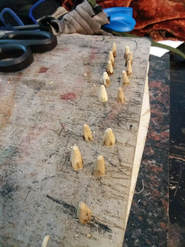


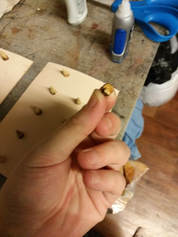

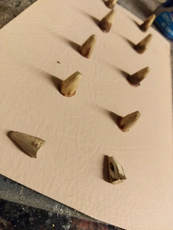


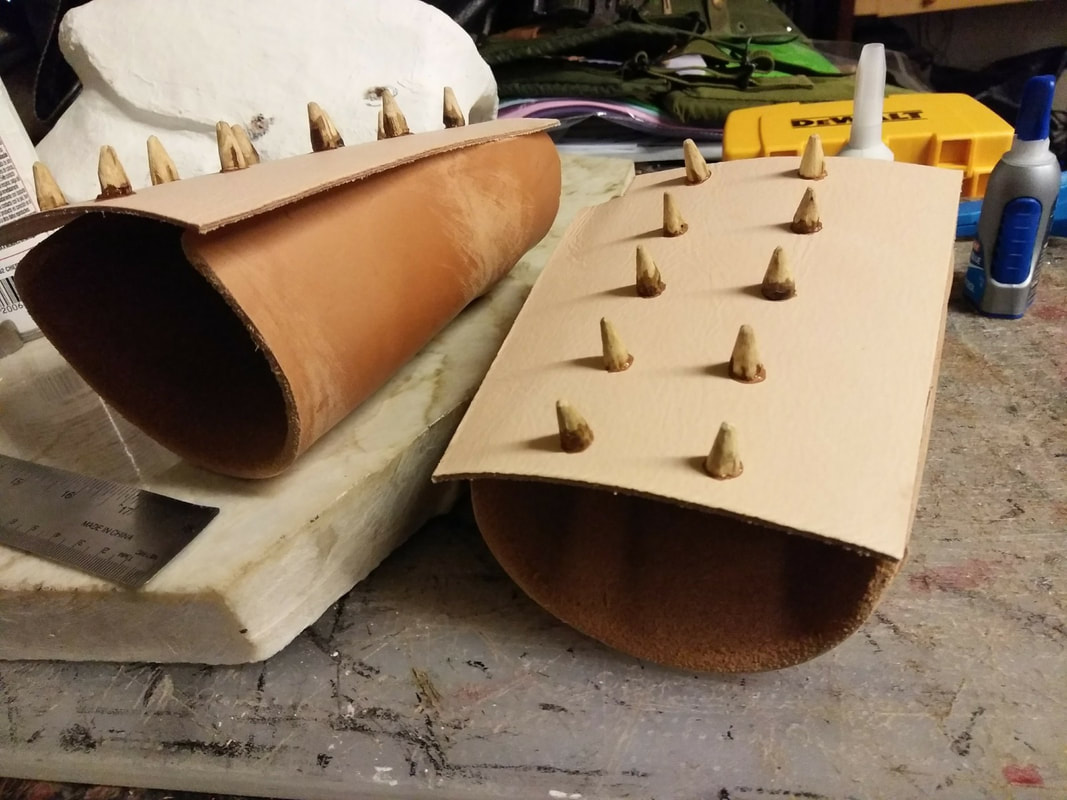


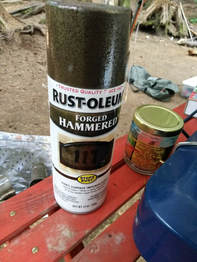









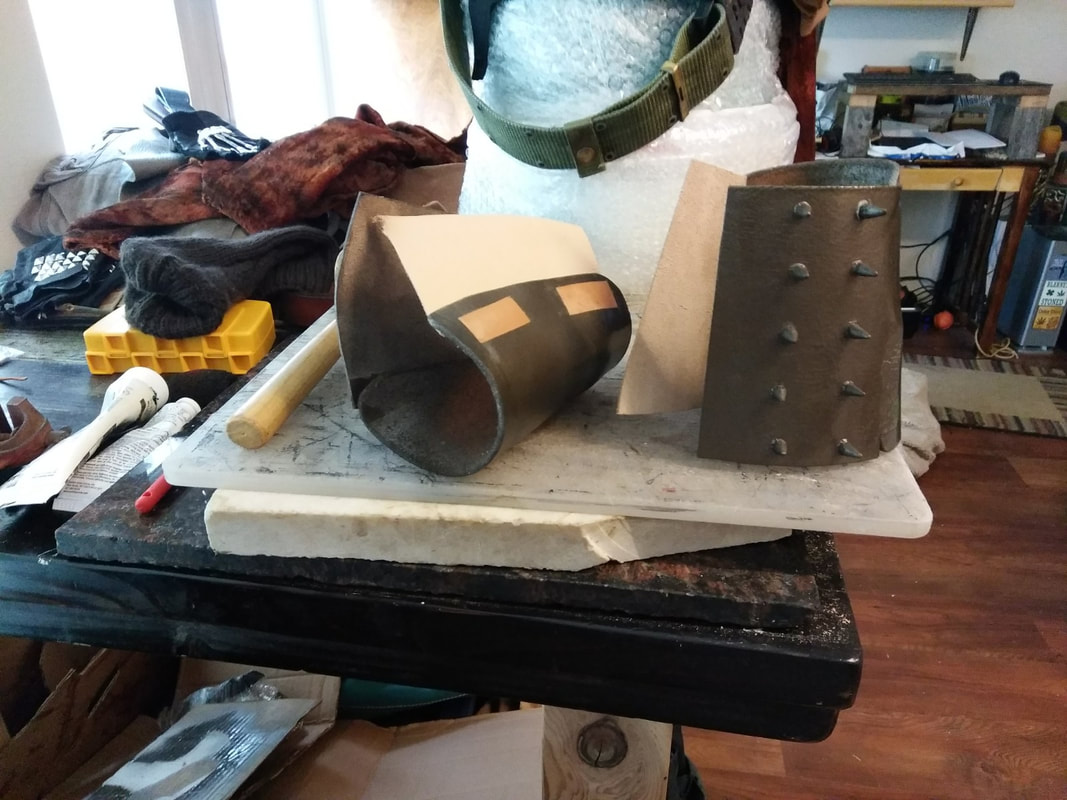




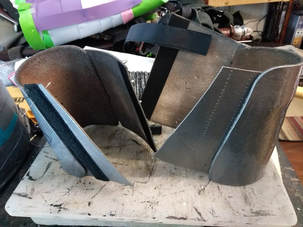


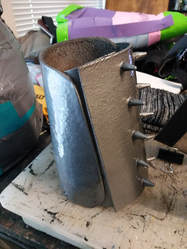


























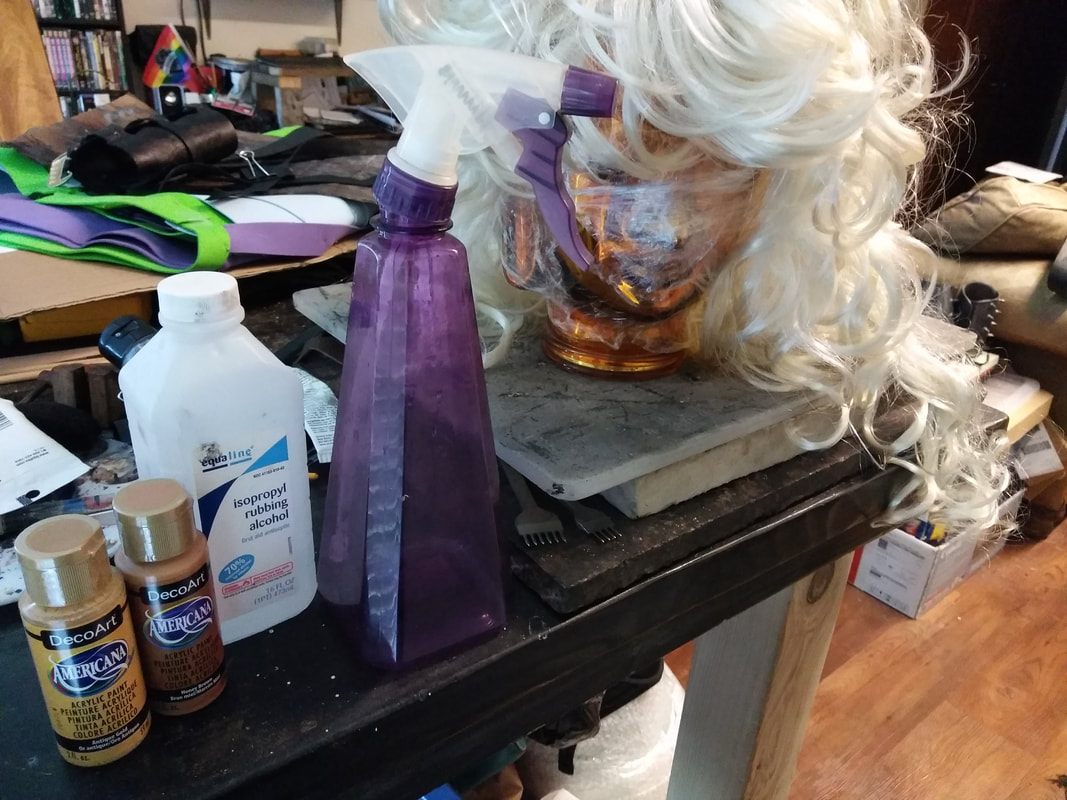



































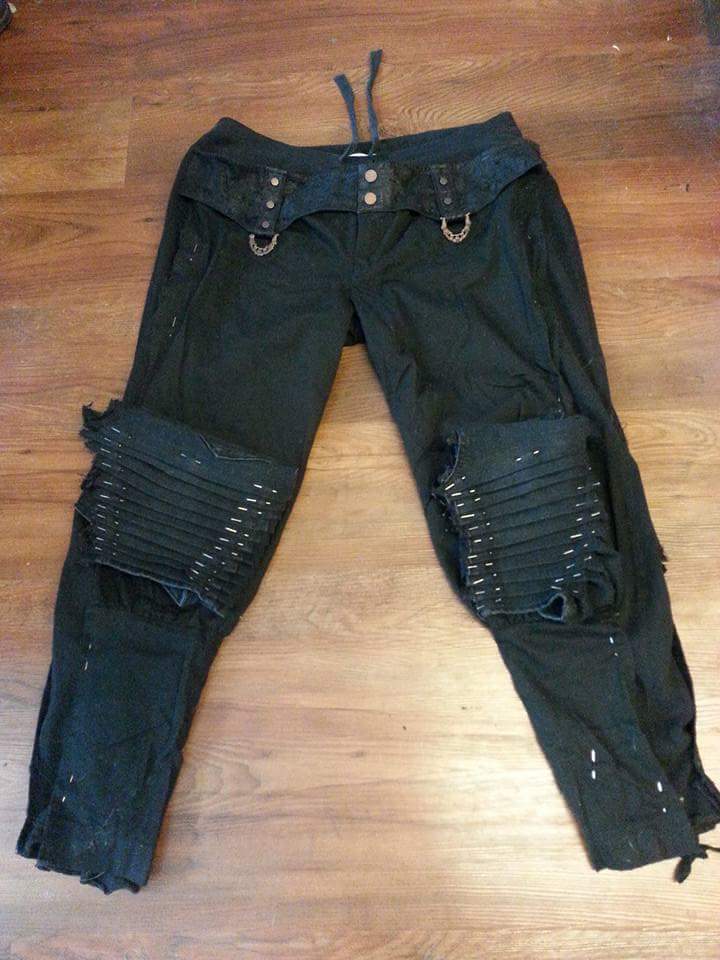


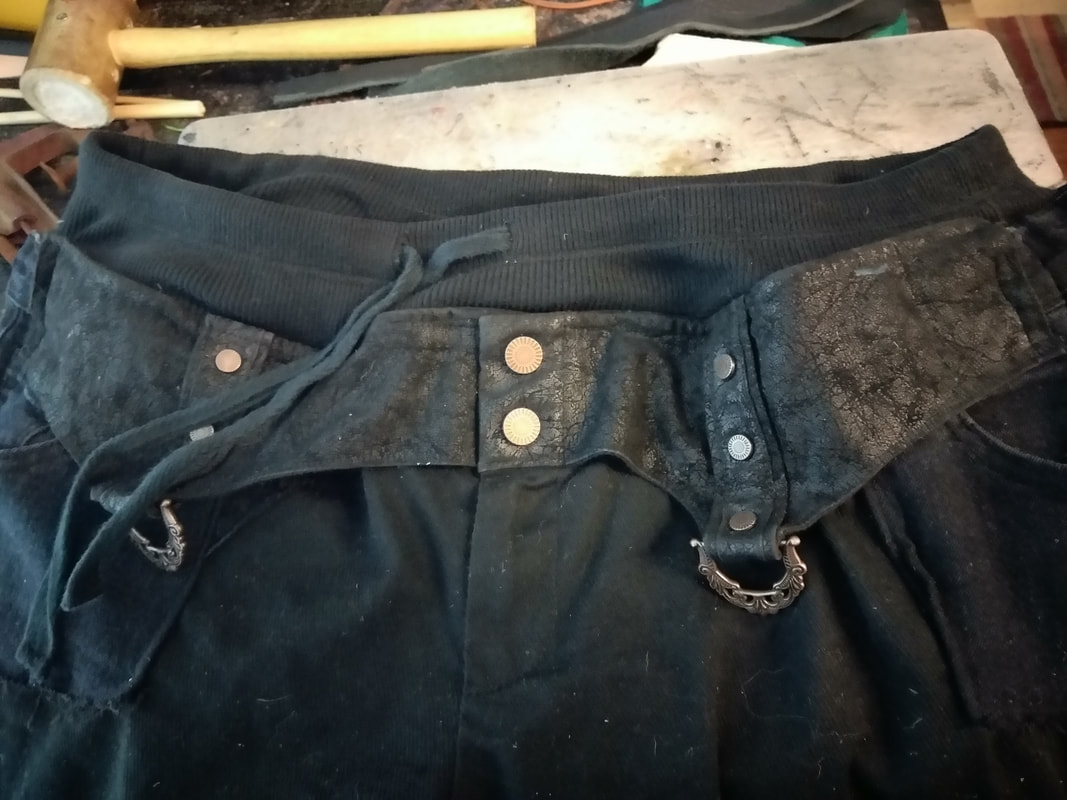

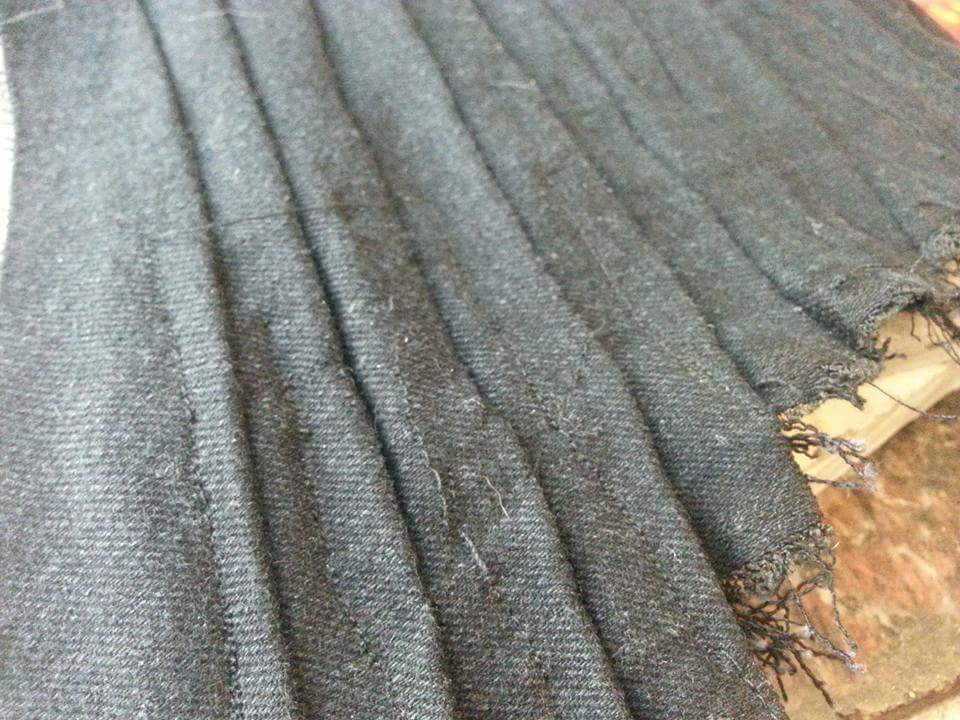

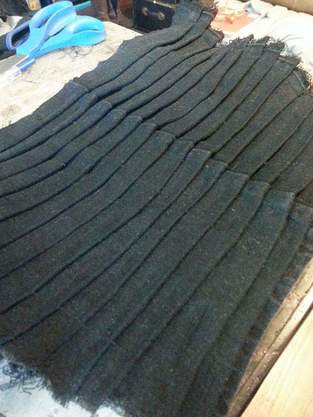


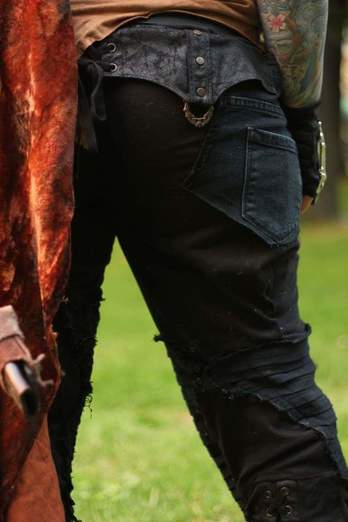








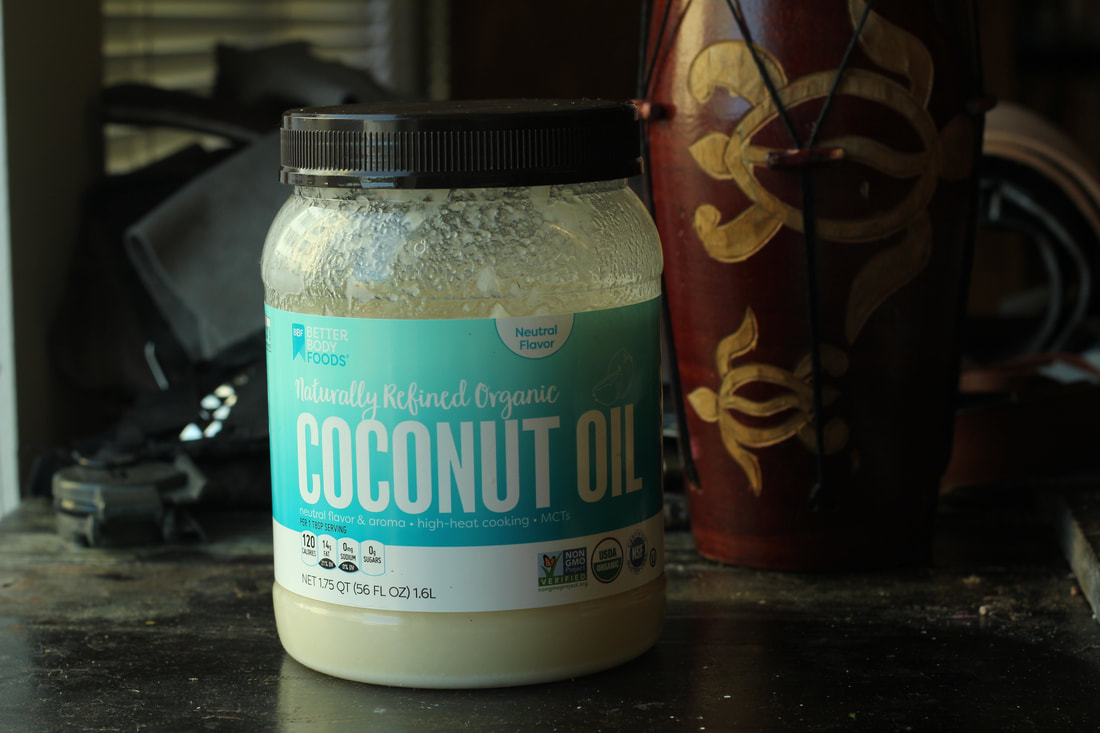

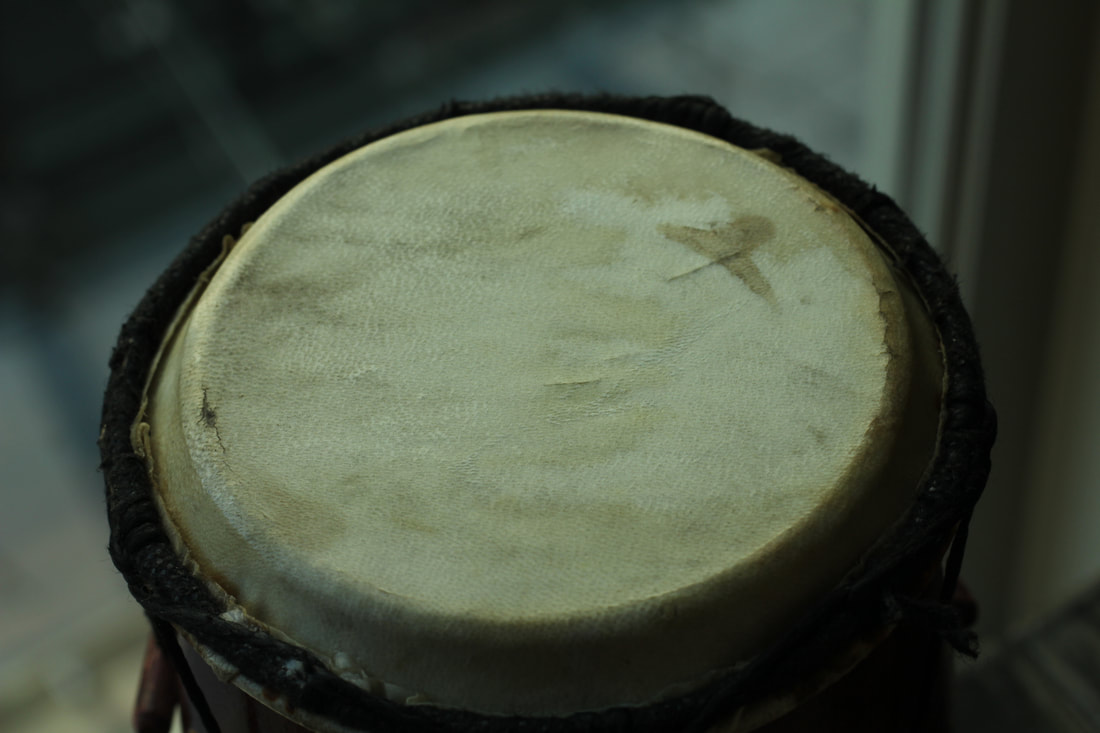

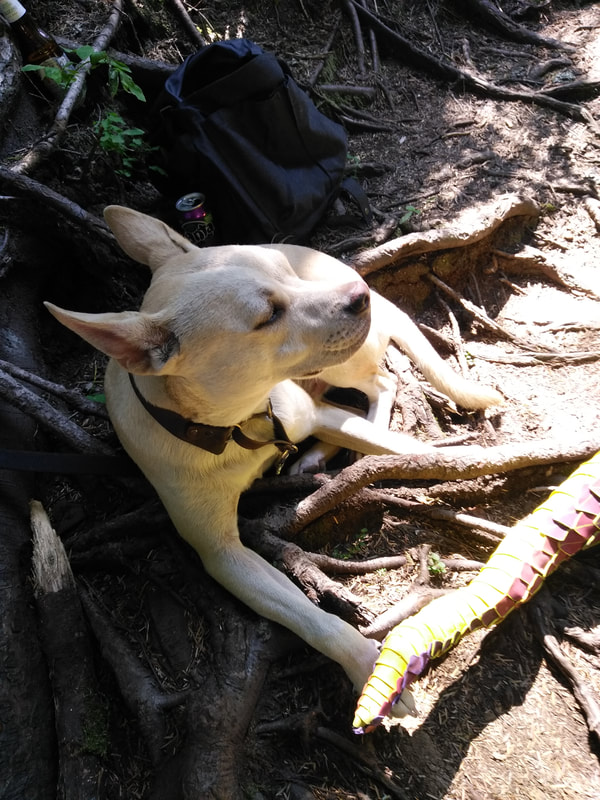
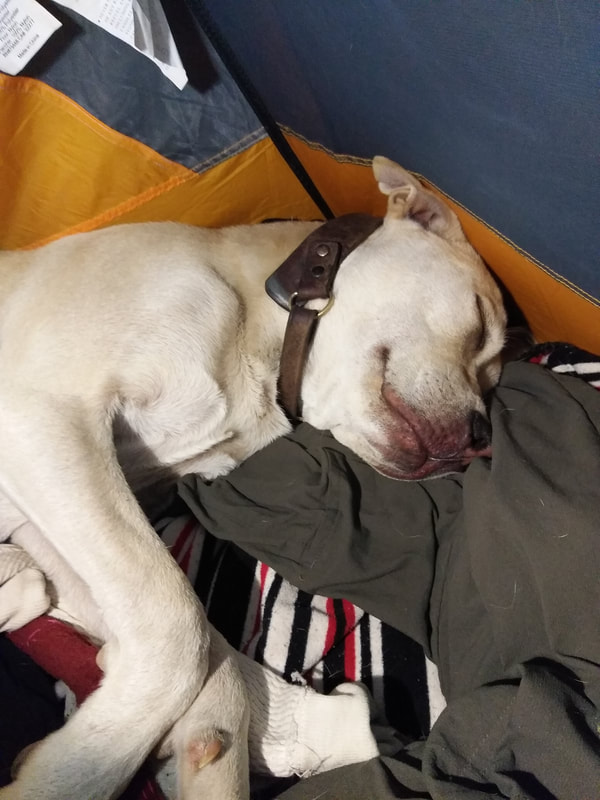










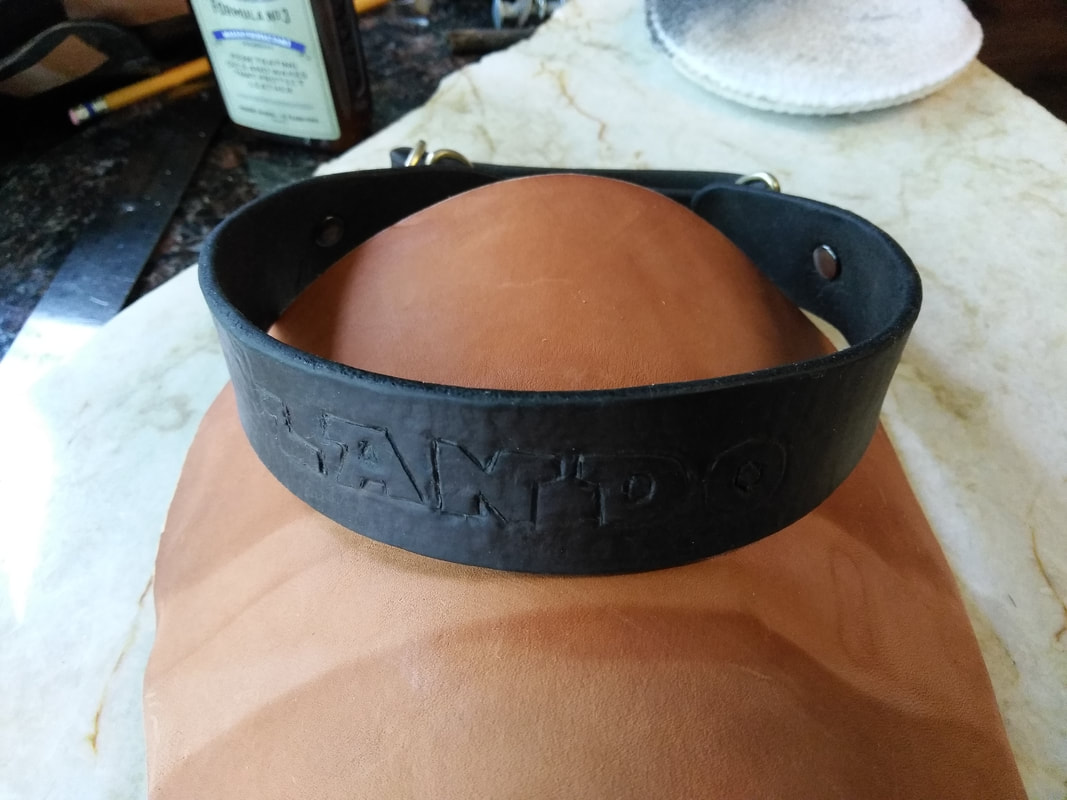

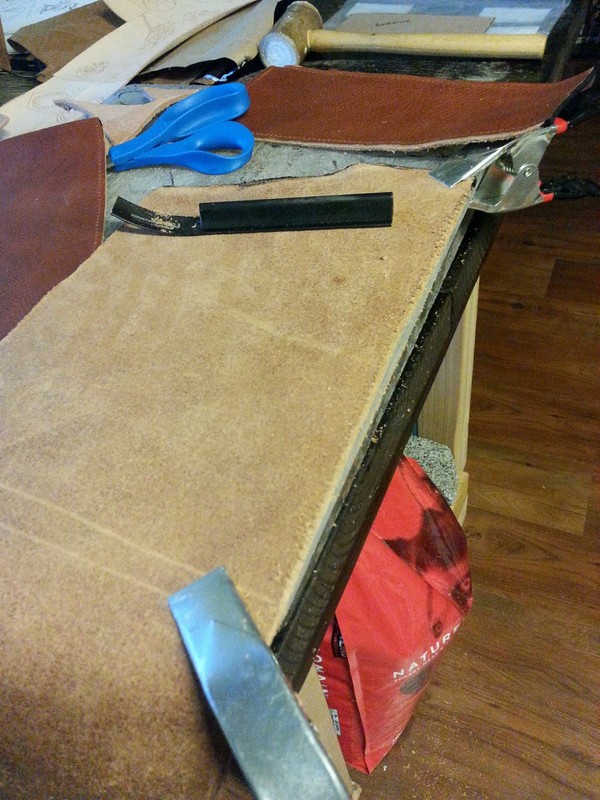







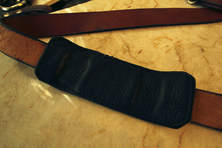


 RSS Feed
RSS Feed
